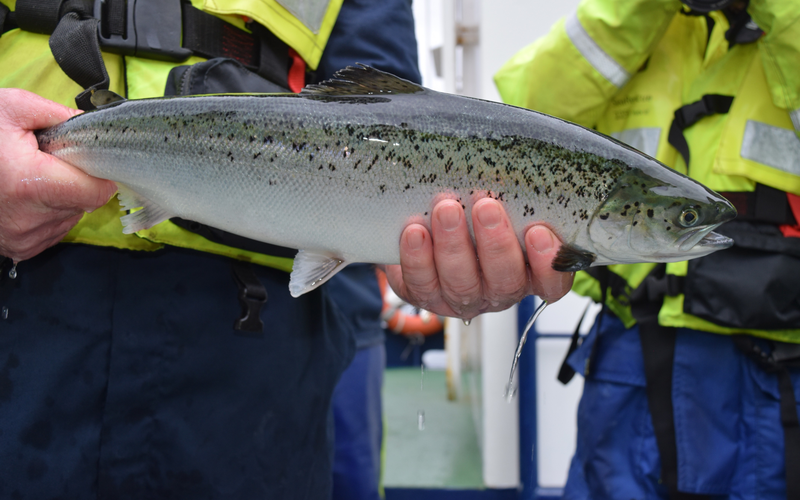A team of Scottish and international aquaculture experts are pioneering the development of an oral vaccine for sea lice, helping the industry tackle one of the biggest threats to the health and welfare of farmed Atlantic salmon. The project, funded by the Scottish Aquaculture Innovation Centre (SAIC), aims to develop a novel vaccine which can be delivered through fish feed, following recent advances in the understanding of fish immune systems.
Sea lice have become an enduring challenge for the global aquaculture industry, with a significant impact on fish health and wellbeing. The cost of sea lice to the Atlantic salmon production industry is estimated to exceed £50 million per year in Scotland alone. The parasites are currently managed and controlled by veterinary medicines, physical and biological tools for parasite removal and optimized farm management practices. Despite existing research and prior testing of injectable vaccines, success has so far been limited with no commercial solution currently available.
The new approach to oral vaccination will deliver the vaccine via specially developed feeds that aim to improve fish resistance to parasites using advanced nanoparticle technology. Innovative bio-engineering tools will also target sea lice by triggering strong immune responses in the skin of fish, rather than delivering it through the bloodstream alone. Sharing approaches employed to control ticks in agriculture, the new vaccine aims to directly target the proteins important for the parasite’s survival.
Sean Monaghan from the Institute of Aquaculture at the University of Stirling said that “reducing the impact of sea lice is a major concern for salmon producers around the globe and we are making headway towards finding an effective method for vaccinating fish against this parasite. There is strong evidence to support the use of an oral vaccination approach, using nanoparticles in feed for vaccine delivery in order to trigger the desired antibody response.”
Polly Douglas, aquaculture innovation manager at SAIC, added that “addressing environmental and health challenges, including sea lice, is one of SAIC’s priority innovation areas and a crucial concern for the global aquaculture industry. The work of this project correlates directly with the Scottish Government’s 10-year Farmed Fish Health Framework, aiming to improve fish health, protect the marine environment, and ensure Scotland’s main food export grows sustainably.”
Project partners include academics from the University of Stirling‘s Institute of Aquaculture, BioMar, the innovative nanoparticle company SiSaf and experts in vaccinology from Tethys Aquaculture. The consortium also draws upon the expertise of vaccinologists at the Moredun Research Institute and academic fish immunologists from the University of Maine in the U.S.













